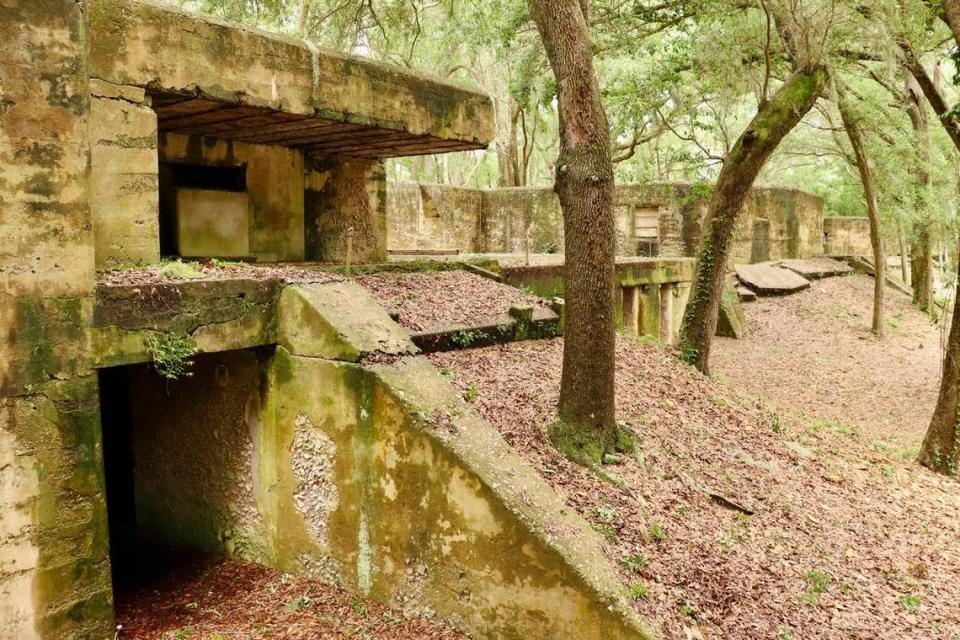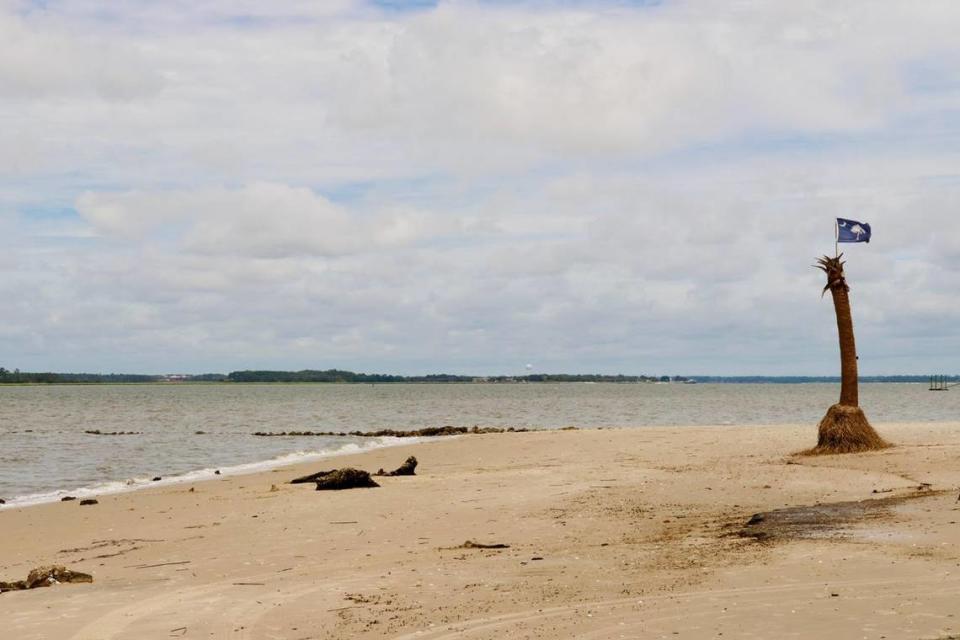A visit to Fort Fremont Preserve on St. Helena Island brings history alive
The Lowcountry is home to many famous forts. Charleston boasts historic Fort Moultrie, where the palmetto tree became South Carolina’s symbol, as the logs of the fort deflected the cannonballs of the British fleet and helped turn the tide of the Revolution.
Nearby, Fort Sumter was battered into rubble during the Civil War, where it heard the first, and some of the very last shots of that conflict. Savannah has the battle-scarred Fort Pulaski, and Hilton Head is home to the earthworks of Fort Howell, a fort that protected the Union fleet — and thousands of freed and escaped slaves living under its guns in Mitchelville.
There is another Lowcountry fort that for many remains little-known. Sun dappled under a green canopy of live oak and moss, massive concrete bastions frown upon a quiet beach. Steel doors stand ajar and windows gape allowing the coastal breeze to filter into dark passageways, where the squeak of bats can be heard — and possibly something more mysterious. At Land’s End, at the terminus of a long road on the beautiful, historic sea island of St Helena, lies Fort Fremont Preserve, and it is well worth the visit.
Fort Fremont is a concrete and earth fortification built in 1898 to protect the Lowcountry during the Spanish-American War. That conflict seems almost distant and obscure today. However, 125 years ago, before technology like satellites and aircraft were a reality, there was actual fear of seaborne invasion. One never knew when a massive enemy fleet would come over the horizon to bombard a coastal town or military installation.
Fort Fremont was one answer to this fear. Part of the Endicott Era Defenses, Fort Fremont consisted of Battery Jesup, which housed three, massive 10-inch naval “disappearing guns,” and Battery Fornance that held two 4.7-inch rapid-fire cannon. These weapons were a technological marvel of its day, and were designed to sink large, sea-going battleships, such as the steel armored Spanish Battleship Pelayo or cruiser Infanta Maria Teresa.
Fort Fremont protected Port Royal Sound, and the U.S. Naval Installation on Parris Island — vital anchorages to the Atlantic fleet. Battleships such as the USS Massachusetts, USS Texas, and USS Indiana made stops here, including the USS Maine before her fatal visit to Havana, Cuba, and the sparking of that war.

Fort Fremont was soon rendered obsolete by newer technology, and by 1920 was abandoned and sold. Over its two decades of service, the fort had expanded to 170 acres and dozens of outbuildings, including a hospital, a commissary, mess hall, barracks and other facilities.
Over the years, the old fort was covered in vines and lost to time. Moss draped over open gun ports, rain dripped through cracked concrete, and the fort became a haunted, forlorn presence in the Lowcountry woods. The “WPA Guide to South Carolina,” commissioned by the Federal Writers Project during the Great Depression, describes Fort Fremont this way: “… bats rustle through unused subterranean passages, and snakes glide out into the light.” Legends grew of ghosts and mysterious noises, and the famous “Lands End Light” is connected to the fort.
Today, Fort Fremont Preserve is nothing like its warlike or its mysterious, neglected past. Held in private hands for many years, the fort slowly began to emerge from the surrounding brambles to find a new place in Lowcountry life. The ruined fort had become an “attractive nuisance” and so was purchased by the Beaufort Land Trust in 2004. It was listed on the National Register of Historic Places in 2010, and development of a public park began.

In 2021 the Pete Richards History Center was constructed. This state-of-the-art facility houses artifacts of the fort and the era — and a fascinatingly detailed diorama of Fort Fremont during its time of service. When you visit, you can take a guided tour or download an interactive guide to your phone.
I have visited Fort Fremont Preserve many times over the years. I first discovered it decades ago, on a dark, rainy afternoon, where my exploration of the dark passages was cut short by mysterious sounds and footsteps heard deep within its dark rooms. I returned years later, after it had become a heritage preserve, and there enjoyed watching my young children play on the battlements and walk the beach.
A recent visit to Fort Fremont Preserve with my family showed me that much has changed. When you go, you will walk well-tended concrete paths, and as the Lowcountry sunshine plays on the concrete walls, it no longer feels abandoned or forgotten.
The Pete Richards History Center is informative and volunteers are friendly. Fort Fremont Preserve is a fine destination for a morning’s visit or a stop on a tour of the islands. It preserves a brief, but formative era in our nation’s history, and today it is one of two unchanged examples of its kind.
Getting there
Fort Fremont Preserve is located at 1126 Land’s End Road on the southern tip of St Helena Island. It is 7.5 miles from the light at Frogmore, S.C., and is easy to find. The park is open year-round from dawn to dusk, and the Pete Richards History Center is open Fridays from 10 a.m. to 2 p.m., Saturdays from 10 a.m. to 4 p.m., and Sundays from 1 p.m. to 4 p.m. Admission is free, parking is ample, and there are excellent restroom facilities.
For more information or to plan your visit, go to https://fortfremont.org/index.html, or contact the Friends of Fort Fremont.


 Yahoo Movies
Yahoo Movies 
